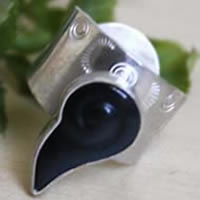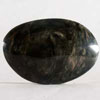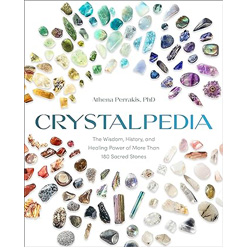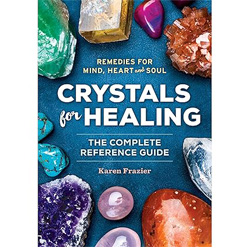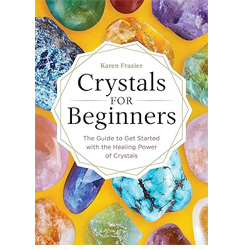- Jewelry
- Inspiration
- Good Deals
- Paintings
- About
- Contact
JEWELRY
- Anklet
- Bracelets
- Brooches
- Cufflinks
- Earrings
- Pendants & Necklaces
- Rings
- Draw your jewelry
- GOOD DEALS
- How to clean your jewel
- Metal we used
INSPIRATION
- Our imagination
- Birthstones
- Druids and druidesses
- Flower meanings
- History, archeology jewelry
- Japanese symbols
- Lithotherapy and stone choice
- Illumination jewelry
- Maya calendar jewelry
- Stone color symbolism
- Stones Catalogue
- Searches a theme on the site
ABOUT
Obsidian: history, healing properties and lithotherapy
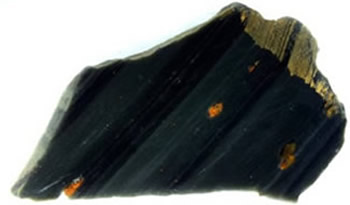
Obsidian properties

Obsidian derives its name from the Roman Obsius, who discovered it in Ethiopia, evoking its ancient and exotic origins.
Often dubbed "volcanic glass," obsidian is an igneous rock of volcanic origin distinguished by its chemical composition rich in aluminum silicates and a high percentage of silica oxide. It forms through the rapid cooling of acidic lava, typically of rhyolitic type, imparting its glassy texture and unique properties.
Its range of colors is as diverse as it is fascinating, spanning from gray to dark green, red, and black, with transparency ranging from transparent to translucent.
History, legends and beliefs about obsidian
Obsidian played a crucial role in Stone Age cultures due to its ease of carving and exceptional sharpness. Used to craft tools such as knives, spears, arrows, and axes, it was indispensable for hunting, cutting, and other activities vital for survival. Moreover, its polishable nature made it a precious material for creating rudimentary mirrors, showcasing its versatility and importance in ancient civilizations.
Evidence of its use dates back to around 1.5 million years BCE, with notable discoveries at sites like Kariandusi, located along the Rift Valley in Kenya, demonstrating its early and widespread use among early peoples.
Obsidian played a pivotal role in the history of surgery as early as 7000 years BCE, being widely utilized for its exceptional cutting properties. Among the most remarkable surgical procedures was trepanation, where a portion of the cranial bone was removed to treat injuries or facilitate spiritual rituals. Recent research has revealed that the use of obsidian in these interventions was remarkably effective, with a survival rate of nearly 2/3 of patients.
In Mesopotamia, obsidian blades have been discovered as early as the 5th millennium BCE, attesting to its early use in this region, with evidence of its extraction in Turkey.
In ancient Egypt, obsidian was precious and imported from the Red Sea, Greece, and Italy, attesting to its value and versatility. Used in the creation of decorative objects, jewelry, and tools, this stone was also an essential element in circumcision rituals due to its sharpness and precise cutting.
Even before the advent of iron, the Greeks on the island of Milos recognized the value of obsidian, which became a source of wealth for them through its flourishing trade.
In Europe, trade networks were established as early as 8000 years BCE between Italy and especially southern France to circulate this stone. This trade appears to have been organized by skilled artisans who sourced the raw material and carved a relatively crude block (nucleus) for transportation. It was only in different villages that they shaped obsidian blades according to demand.
In America, particularly in Mexico, obsidian holds paramount importance, occupying a central place in the study of pre-Hispanic civilizations. It is explored from various angles, ranging from trade - sometimes over long distances - to warfare and religion. Its diversified use extended to various domains, whether as tools, decorative objects, votive artifacts, jewelry, or weapons, showcasing its multifunctional role within these ancient societies.
In Mexico, a fascinating discovery lies in the wooden sword with obsidian blades, known as the macuahuitl. This formidable weapon was feared for its ability to inflict significant damage, capable of both cutting and sawing, demonstrating the ingenuity of ancient civilizations in using natural materials for crafting effective weapons.
Each obsidian deposit, closely linked to a specific volcano, produces a unique variety of this rock, allowing for the tracing of commercial exchanges over vast distances, some extending over 400 km from the point of origin. This diversity of obsidian also led to differences in value based on its properties and colors, contributing to its importance in trade and cultural exchanges between ancient civilizations.
Obsidian held a sacred and mystical place among the peoples of pre-Columbian America, especially for the Aztecs, who revered it as a divine element. According to some versions of creation myths, the goddess of the earth, Coatlicue, is said to have used an obsidian blade to create the moon, Coyolxanuhqui, and the stars, symbolizing the creative and regenerative power of this stone.
For the Aztecs, obsidian, called Iztli or Teotetl, was closely linked to the god of the "smoking mirror," Tezcatlipoca, associated with sorcery and divination. He represented the antithesis of Quetzalcoatl, the feathered serpent god.
Many other Aztec gods were also associated with obsidian, such as Itzpapalotl, the "obsidian butterfly goddess," a formidable warrior deity, or Itztlacoliuhqui, the "god of the curved obsidian blade," ruler of frost and cold. These divine associations testify to the sacred nature and profound spiritual significance of obsidian in Aztec cosmology.
The Aztecs also used obsidian mirrors for divination to foresee the future. By pouring water onto the mirror’s surface, they observed shapes emerging in the reflection, a practice closely linked to the god Tezcatlipoca, symbolizing esoteric knowledge and sorcery.
In a pre-Hispanic tomb on the coast of Peru, a fascinating discovery was made: a complete surgical kit, demonstrating the medical advancements of ancient civilizations. Among the tools found were obsidian knives, spatulas made from sperm whale teeth, cotton balls, rags, bandages, thread, and needles, illustrating the sophisticated use of obsidian in ancient medical practice.
The Navajos, on the other hand, maintained a deep spiritual relationship with obsidian. Regarded as one of the four sacred stones, it was associated with four sacred mountains precisely located on their territory. The obsidian mountain, Dzil bash'zhini, identified today as Mount Hesperus, played a central role in their cosmology. According to some versions of their creation myth, the heart of man was fashioned by the gods from obsidian, underscoring the primordial place of this stone in their worldview and conception of humanity.
The practice of divination through an obsidian mirror has spanned centuries, remaining alive and fascinating. Dr. John Dee (1527-1608), a prominent scholar at the English court, contributed to popularizing this practice. As an alchemist, mathematician, astronomer, magician, and astrologer, he was at the height of his fame. Possessing a "magic mirror" of obsidian, which he allegedly received as a gift from the angel Uriel according to legend, he captivated the minds of his time. This mirror, actually an Aztec artifact brought to Europe after the conquest, was his main tool for exploring the future. His reputation was built on his presumed ability to thwart many plots against the English crown, adding a dimension of mystery and admiration to his already legendary figure.
Currently, obsidian is widely used in specialized fields such as cardiac and ocular surgery, where its ultra-fine blade offers unparalleled precision, surpassing even that of steel scalpels. This use attests to the trust placed in the sharpness and finesse of obsidian’s edge in delicate medical procedures.
Furthermore, obsidian finds its place in a variety of everyday objects, adding a touch of sophistication and durability. For example, it is sometimes used to make piano keys, offering exceptional resistance to the constant wear of this instrument. Similarly, obsidian chess pieces bring a unique aesthetic and luxurious feel to the game, while resisting wear and scratches.
Mines: Greece, Iceland, Italy, Japan, Mexico, Peru, the USA, Armenia, Azerbaijan, Chili and Guatemala.
Healing properties and benefits of obsidian
- Associated with justice, obsidian embodies balance and righteousness in decisions.
- The healing properties of obsidian extend to a wide range of ailments, from bruises and inflammations to cysts, fibroids, and tumors, offering natural and soothing relief.
- In addition to its anti-inflammatory virtues, obsidian is renowned for its effectiveness in controlling viral and bacterial infections, thereby bolstering the immune system.
- It is also considered beneficial for digestive health, soothing colon irritations, treating gastroenteritis, and alleviating nausea, providing relief for a variety of gastrointestinal disorders.
- Furthermore, obsidian is reputed for its beneficial properties for men’s health, aiding in resolving sexual problems.
- By relieving muscle pains associated with arthritis, it thus enhances overall quality of life.
⚠ Please note that all healing properties presented for gemstones are gathered from various sources. This information is provided as a service and is not intended to treat medical conditions. It is recommended to consult a healthcare professional for serious medical issues and not to rely solely on gemstones as a treatment.

